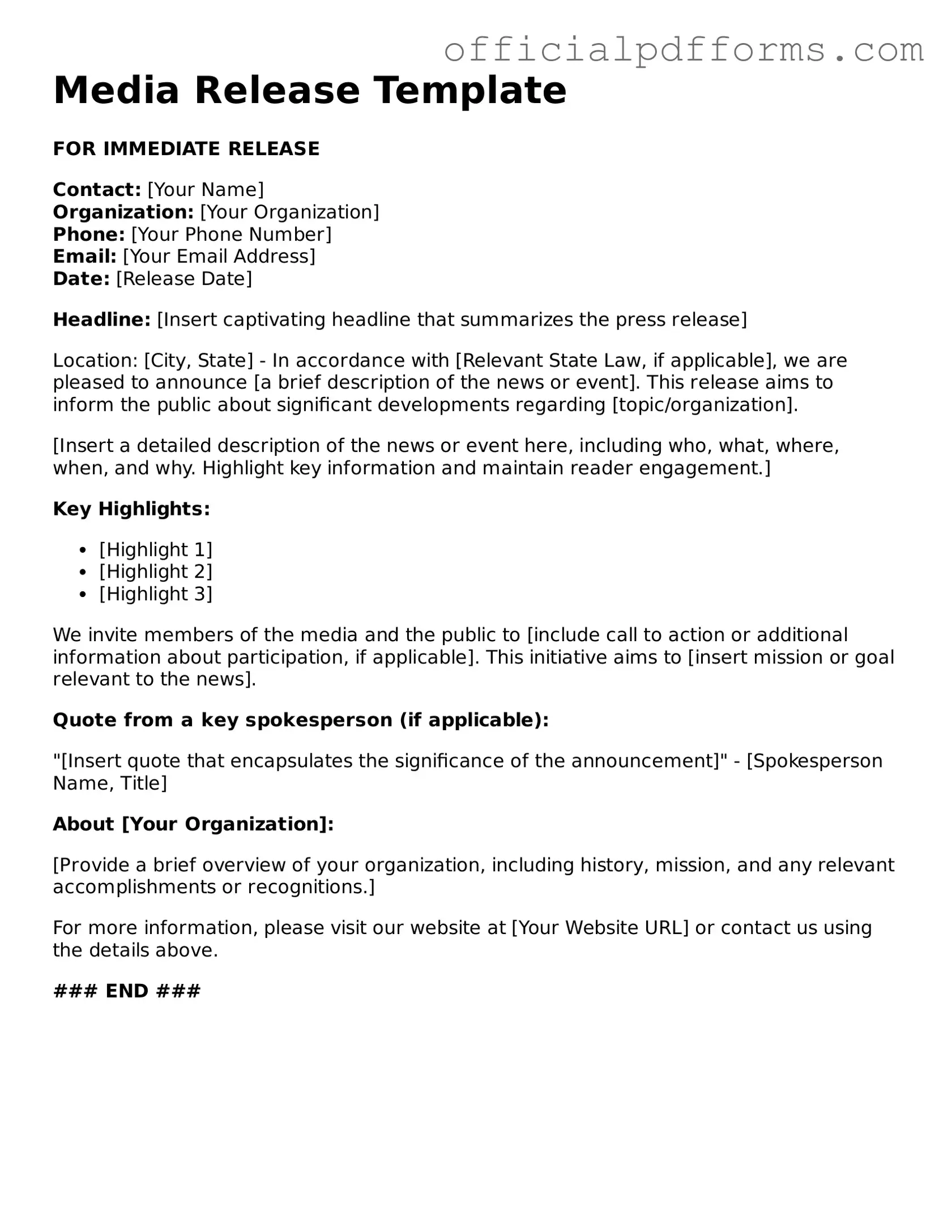A Media Release form is a legal document that grants permission for the use of an individual's image, voice, or other personal likeness in various media formats. This can include photographs, videos, and audio recordings. By signing this form, individuals allow organizations or individuals to use their likeness for promotional purposes, marketing, or other media-related activities without any compensation.
The Media Release form is crucial for protecting both parties involved. For the individual, it ensures that their rights to their image and likeness are clearly defined. For the organization or individual using the media, it provides legal protection against potential claims of unauthorized use. This form helps to establish trust and clarity in the relationship between the parties.
Anyone whose image or likeness will be used in media should sign a Media Release form. This includes:
-
Participants in events or activities being photographed or filmed.
-
Individuals featured in promotional materials.
-
Actors or performers in videos or films.
If the individual is a minor, a parent or guardian must sign on their behalf to ensure that the rights of the minor are protected.
A comprehensive Media Release form typically includes the following elements:
-
The name and contact information of the individual granting permission.
-
A clear statement of what is being authorized, including the types of media and purposes for use.
-
The duration of the permission granted.
-
Any compensation details, if applicable.
-
A statement releasing the organization from liability.
Including these elements helps ensure that all parties have a clear understanding of the agreement.
Generally, once a Media Release form is signed, the permission granted cannot be revoked. This is because the organization may have already used the media for promotional purposes. However, if you have concerns about the use of your likeness, it is essential to discuss them with the organization as soon as possible. Some organizations may be willing to negotiate terms or address specific concerns.
If an individual chooses not to sign a Media Release form, the organization may not be able to use their image or likeness in any promotional materials or media. This could limit the individual's participation in events or activities where photography or filming is involved. It's important to communicate any concerns about signing the form with the organization to explore possible alternatives.
